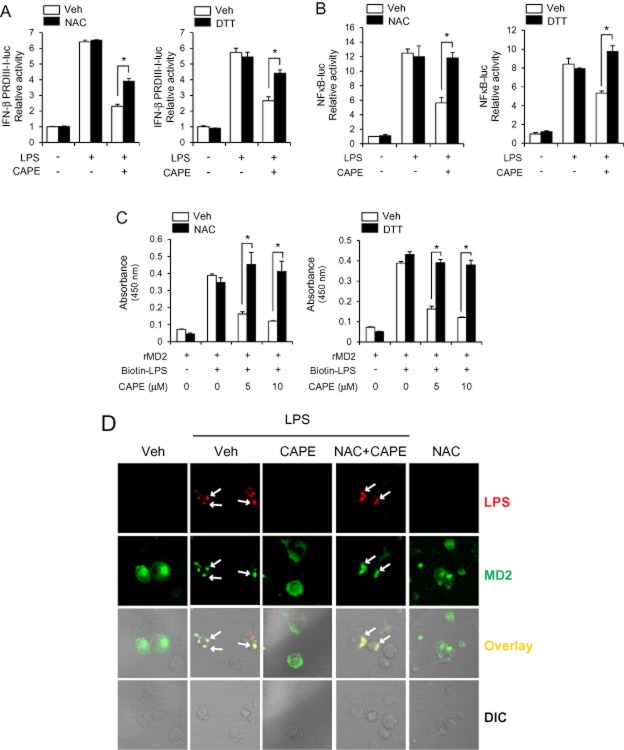Figure 7.
The inhibitory effects of caffeic acid phenethyl ester (CAPE) on IRF3 activation and lipopolysaccharide (LPS)-MD2 association are reversed by thiol-donors. (A) RAW264.7 cells were transfected with IFN-β PRDIII-I-luc. Cells were further pre-treated with CAPE (10 μM) in the absence or presence of N-acetyl-L-cysteine (NAC, 2 mM) or dithiothreitol (DTT, 300 μM) for 1 h and stimulated with LPS (10 ng mL−1) for 8 h. Values are means ± SEM (n = 3). *P < 0.05. (B) Ba/F3 cells expressing TLR4, MD2 and NFκB-luc were pre-treated with CAPE (10 μM) in the absence or presence of NAC (1 mM) or DTT (200 μM) for 1 h and stimulated with LPS (1 ng mL−1) for 8 h. Values are means ± SEM (n = 3). *P < 0.05. (C) In vitro assay for LPS binding to MD2 was performed. CAPE was pre-incubated with NAC (50 μM) or DTT (50 μM) for 30 min at 37°C and then further incubated with rMD2 for 30 min at 37°C. Biotin-LPS was added to wells containing rMD2. Values are means ± SEM (n = 3). *P < 0.05. (D) Bone marrow-derived primary macrophages were pre-treated with CAPE (10 μM) in the absence or presence of NAC (2 mM) for 1 h and then treated with Alexa Fluor 594 conjugated with LPS (1.5 μg/group) for 30 min. Cells were stained with anti-MD2 antibody together with FITC-conjugated anti-rabbit IgG secondary antibody. DIC, differential interference contrast.

